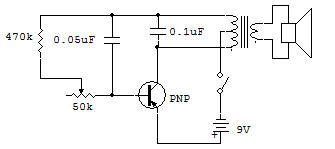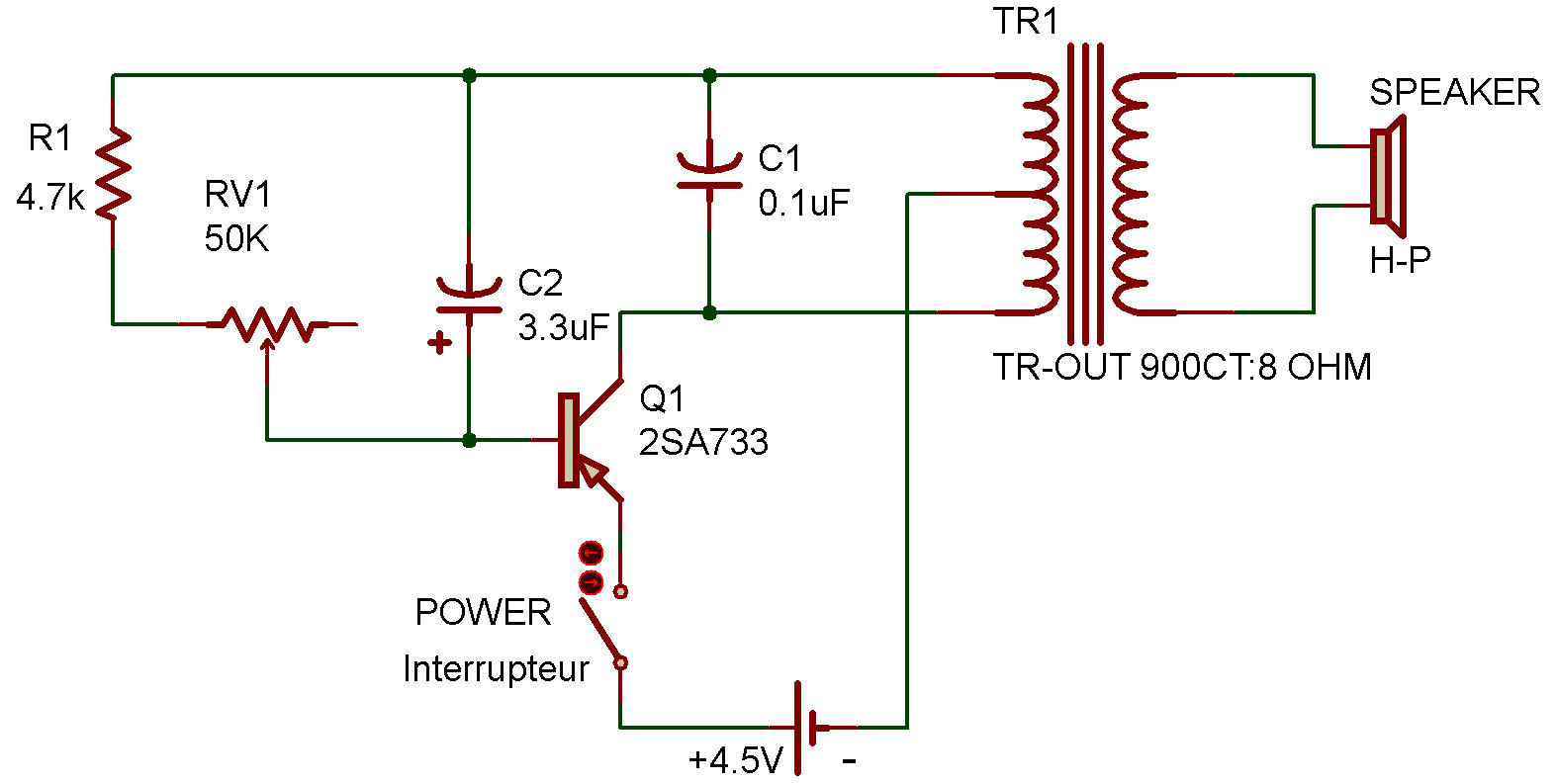

Sonic Fish Caller

For many years fishermen have looked for ideas that will help them catch fish. Then some scientists and biologists found out that fish (and other marine animals) communicate with sounds. They don't "talk" obviously, but they can make sounds that represent danger or other basic responses.
Also, scientists found that some fish respond to certain sounds with curiosity, they are attracted by some sounds, and so the Fish Caller was invented for fishermen.
This circuit is similar to some of the Fish Callers being sold today. Unfortunately a water-proof speaker is very expensive, but if you seal a speaker inside a totally water-proof plastic bag or inside a glass jar, the sounds from the speaker can be transmitted through the water.
If you want to try this in water, attach long wires to the speaker terminals (it is best to solder the wires) and then VERY CAREFULLY seal the speaker inside a totally water-proof plastic bag or inside a glass jar. Be sure no water can get onto the speaker. Connect the speaker to this circuit and lower the speaker into the water. Now see if your Fish Caller works, try fishing.
The circuit is a simple pulse waveform oscillator. The requirements for an oscillator are that the output be greater than the input, and the output must be connected back to the input in-phase (or regenerative). For this oscillator the Transistor provides a gain many times greater than 1 (1 stands for whatever the input or base current is), and the Transformer provides the coupling of the output back into the input.
The output of the Transistor is through the collector to the emitter. This makes the bottom half of the Transformer winding the output load for the Transistor.
The input to the Transistor is through the base to the emitter.
The 470K and 50K Control (wired as a rheostat) along with the 0.05uF couple the output from the Transformer back to the input of the Transistor. Because the emitter of the Transistor is common to both input and output of the Transistor (operating as an amplifier), the connections to opposite ends of the Transformer provide the proper in-phase or regenerative feedback.
The 0.05uF Capacitor couples so much of the Transformer signal into the base that operation results in narrow pulses being developed and coupled to the Speaker. It is these narrow pulses which give this circuit its particular sound.
Do the fish think it is a frog or other bait?
The 0.1 uF Capacitor helps determine the strength (amplitude) and frequency of the pulses. You may want to experiment with different values for this, as well as the 0.05uF Capacitor and use 3 volts .
Who knows, you may find the type of signal that will attract a whale!
This might be a good experiment to build up on your own, using parts available from your electronic parts scrap box (you'll soon have such a box if you take up electronics as a hobby) or from store. Build the circuit inside or on a convenient chassis, box, or container.
Hear is a another version

